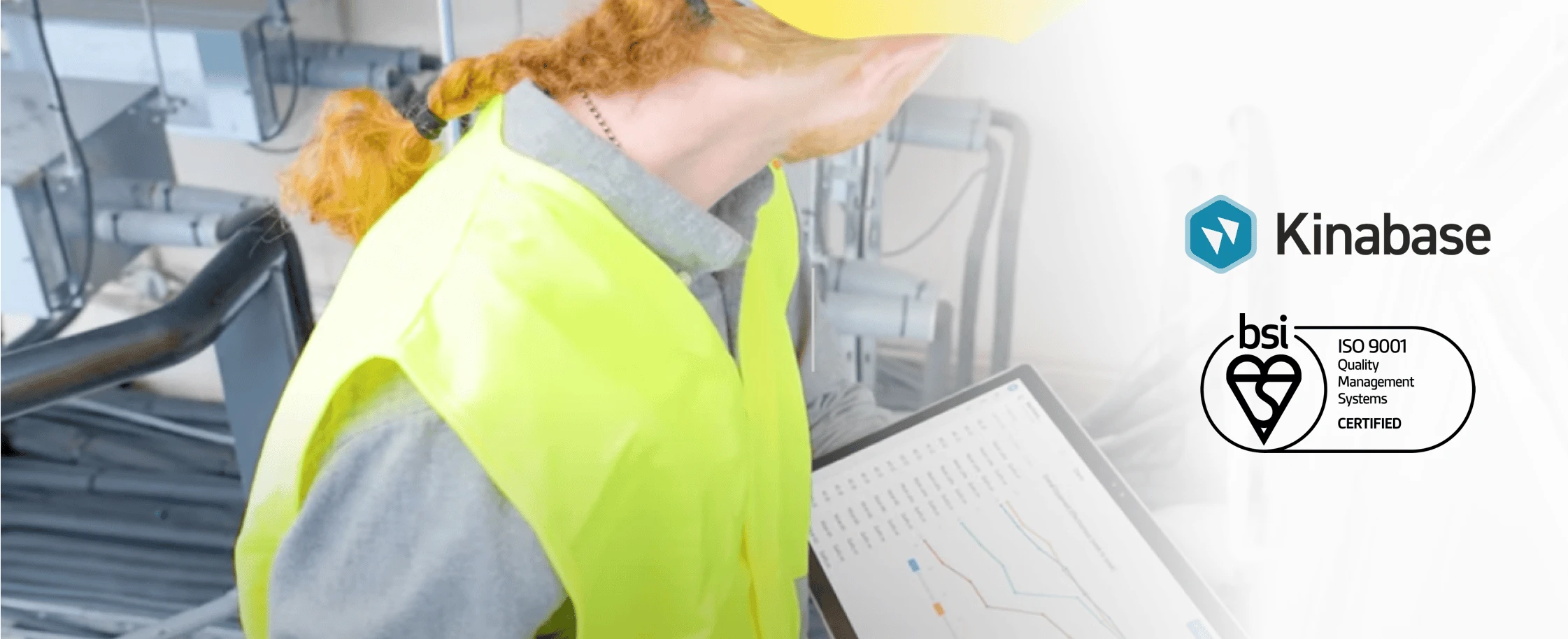
Transform your Quality Management System into your most valued asset
Traditional Quality Management is a headache – but it doesn’t have to be
Having worked in multiple highly regulated industries, such as pharmaceuticals, aerospace and medical devices – I'm no stranger to Quality Management.
However, I’ve never been satisfied with the software tools at my disposal and felt that the typical approach taken often falls short of the mark, becoming a burdensome liability rather than a productive asset.
"A good Quality Management System should be an enabler for your engineers, not a hindrance nor afterthought. This is why I was delighted to partner with Kinabase."
— Michael Lavelle
The typical industry approach consists of an impenetrable Quality Manual of long, cumbersome, and frankly dull, pdf documents that your team are forced to read once a year. Undertaking work to these standards, particularly at pace, and all the while ensuring traceability, becomes impractical and inevitably standards slip. The result is a constant bureaucratic battle between the quality team and the engineers undertaking the work.
This traditional method has a few easily identifiable, key flaws...
...Flaws that if I was auditor, would cause most companies to fail.
The compliance conundrum
The first challenge is compliance using a static Quality Manual. Guaranteeing compliance is next-to-impossible and purely based on trust and/or posthumous checks. Here’s why:
There is nothing to stop an engineer circumnavigating the process and cutting corners, whilst regressing into mindless box ticking and hoop jumping. I know this because I’ve witnessed it firsthand on multiple different occasions.
Instead, compliance relies on thoroughly checking and reviewing every quality-critical work package produced. This backchecking and reviewing becomes a significant drain on resources and an inherent risk to the product as there is an unavoidable delay between non-conformance issues arising and the quality team catching the issue.
Critically, this slows development cycles and creates a dry, paperwork-laden trail, rather than enabling engineers to focus on the real technical challenges.
Total traceability, without losing time
A key feature of a good QMS, and one that is essential for passing your audits, is traceability.
Most traditional QMS systems rely on various signature loops and file naming conventions to assure that records are traceable for when an audit arises. However, this method is cumbersome, time-consuming and is often either an afterthought, or a constant drain on process speed. Resulting in ‘sludgy processes’ - as a former boss of mine would call them.
All these problems make the traditional QMS a burden and a liability.
So, what does “good” look like?
Ultimately, a good Quality Management System should offer the path of least resistance, that still meets your project requirements. It should be an effective tool to consistently achieve results whilst adhering to the standards of that industry sector.
"It shouldn’t be a drain. It shouldn’t be an afterthought. Your QMS should be a practical, structured system that is guaranteed to achieve your objectives."
It should make fulfilling work packages streamlined and straightforward – ensuring that everything has been addressed, whilst making sure that the process is controlled, repeatable and traceable.
Most crucially, it should enforce compliance.
Partnering with Cambridge Kinetics
So, when the opportunity arose to partner with the experts at Cambridge Kinetics to work on Kinabase; their flexible business management software, I saw the massive potential to revolutionise the industries I’ve worked in.
As an independent consultant I was initially contracted to analyse Cambridge Kinetics’ QMS and revise it to suit their new product-focused processes. After evaluating each process and streamlining wherever I could, it was fantastic to be able to embed every process into their software – Kinabase.
Utilising a combination of Kinabase’s workflows, permissions, validation, automation and activities features, being able to establish and effectively 'program' every Quality Procedure directly into the system has been transformative.
This meant a rationalised set of procedures, that directly linked to the products, documents, outputs and services provided by Cambridge Kinetics. Not only does this ensure compliance, meaning the correct boxes must be filled, and the appropriate signatures provided. It also provides an activity log of every single change to the records. This full and effortless traceability truly is a game-changer.
ISO 9001 audit
A few months after the procedures were programmed in and the team had settled into a steady state, we were due for our annual ISO 9001 audit.
The audit was scheduled to take a full workday. However, after reviewing our QMS, the auditor was finished before lunchtime... he had no findings, no suggestions and basically told us to ‘Just keep doing what you are doing’.
The opportunities are endless
In just a few weeks, Kinabase enabled us to optimise procedures, embed them into the Kinabase software package and pass the ISO 9001 audit with flying colours. As a result of this experience, I have continued a close partnership with Cambridge Kinetics to help guide and shape the future capabilities of Kinabase and to be a product ambassador for the high-tech manufacturing sector.
Kinabase proves that a Quality Management System can be a productive asset that streamlines and strengthens your team, rather than a hindrance. The burdensome piles of paperwork, that many in the industry seem so keen to generate - no longer need to be an obstacle.
See for yourself
- Are you ready to transform your Quality Management System?
- Are you aiming for ISO certification?
- Or do you simply want to streamline your operations?
Please reach out to us for a demonstration, we’d love to show you how we can help.
Contact us at hello@kinabase.com or (+44) 01223 626262 to learn more.
Recent Articles

Sleigh Bells and Stock Levels: How a Single Source of Truth Streamlines
Turn seasonal pressure into a plan for durable, data-led advantage for a smoother transition into a smarter Q1.

Data Without the Headache: AI-Powered Insights for Decision-Makers
How AI Reduces Complexity and Enables Smarter, Faster Decisions .

Customising Your Digital System for Long-Term Growth
Utilising the flexibility of Kinabase to track and evolve with business needs.